Crushed spine. Spine Compression Fractures: Causes, Symptoms, and Treatment Options
What are the common causes of spine compression fractures. How can you recognize the symptoms of a vertebral fracture. What treatment options are available for spinal compression fractures.
Understanding Spine Compression Fractures
A spine compression fracture occurs when one or more vertebrae in the spine collapse, often due to weakened bones from osteoporosis. These fractures most commonly affect the thoracic spine (upper back) and can lead to pain, loss of height, and spinal deformity if left untreated.
What exactly is a compression fracture? It’s typically defined as a vertebra that has decreased at least 15-20% in height due to fracture. While they can occur anywhere in the spine, compression fractures are most common in the lower thoracic vertebrae (T10-T12) and upper lumbar vertebrae like L1.
Types of Spinal Compression Fractures
There are a few main types of compression fractures:
- Wedge fracture: The most common type, where the front of the vertebra collapses while the back remains intact, creating a wedge shape.
- Crush fracture: The entire vertebra breaks and collapses.
- Burst fracture: Both the front and back walls of the vertebra fracture, which can be unstable and potentially damage the spinal cord.
Understanding the type of fracture is crucial for determining the appropriate treatment approach and assessing the risk of complications.

Recognizing the Symptoms of Vertebral Fractures
How can you tell if you’ve experienced a spinal compression fracture? The symptoms can vary, but often include:
- Sudden, severe back pain
- Pain that worsens with standing or walking
- Limited spinal mobility
- Loss of height
- Deformity of the spine (kyphosis or “dowager’s hump”)
- Difficulty breathing due to compressed lung space
It’s important to note that some compression fractures may occur with minimal or no pain, especially in people with severe osteoporosis. This “silent” nature can lead to multiple fractures before the condition is diagnosed.
Long-Term Effects of Untreated Fractures
What happens if spinal compression fractures are left untreated? The consequences can be significant:
- Chronic back pain
- Progressive spinal deformity
- Decreased lung capacity
- Reduced mobility and independence
- Increased risk of future fractures
- Diminished quality of life
Early diagnosis and treatment are crucial to prevent these long-term complications and maintain spinal health.

The Link Between Osteoporosis and Vertebral Fractures
Osteoporosis is the primary cause of spinal compression fractures, particularly in older adults. This condition weakens bones, making them more susceptible to fractures even from minor stresses or everyday activities.
How prevalent are osteoporosis-related compression fractures? They’re surprisingly common:
- Approximately 700,000 spinal compression fractures occur annually in the United States.
- An estimated 25% of postmenopausal women in the U.S. have experienced a vertebral compression fracture.
- While more common in women, men are also at risk – about 1 in 4 men over 50 will experience an osteoporosis-related fracture.
These statistics highlight the importance of osteoporosis prevention and early detection, especially for those at higher risk.
Risk Factors for Osteoporosis and Compression Fractures
What factors increase your risk of developing osteoporosis and experiencing compression fractures? Key risk factors include:
- Age (risk increases with age)
- Gender (women are at higher risk)
- Family history of osteoporosis
- Low body weight or small frame
- Smoking and excessive alcohol consumption
- Lack of physical activity
- Low calcium and vitamin D intake
- Certain medical conditions (e.g., rheumatoid arthritis, hyperthyroidism)
- Use of certain medications (e.g., long-term corticosteroid use)
Understanding your risk factors can help you take proactive steps to maintain bone health and prevent fractures.
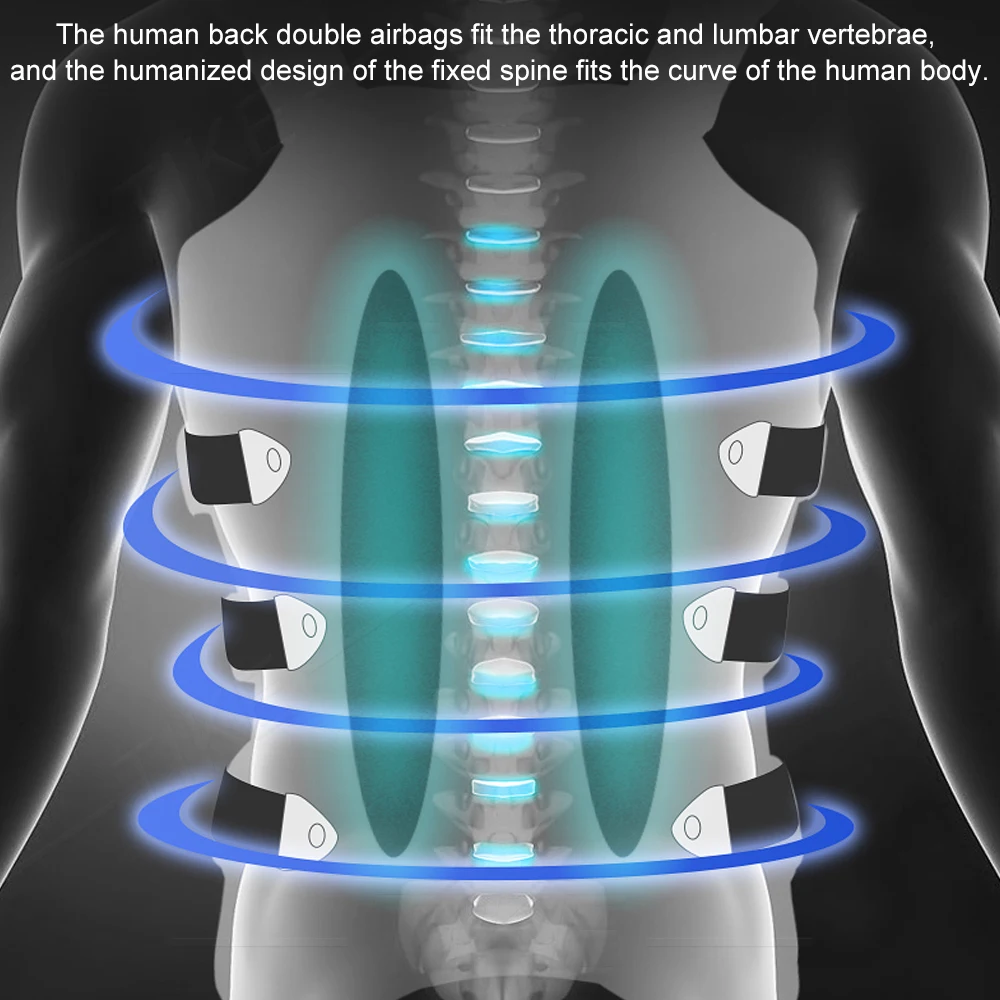
Diagnosing Vertebral Compression Fractures
Accurate diagnosis of spinal compression fractures is essential for appropriate treatment. How do healthcare providers diagnose these fractures?
Physical Examination
The diagnostic process typically begins with a thorough physical examination. The healthcare provider will:
- Assess spinal tenderness and pain
- Check for any visible deformities
- Measure height (to check for any loss)
- Evaluate overall posture and spinal alignment
- Test neurological function
Imaging Studies
What imaging techniques are used to confirm a diagnosis of vertebral compression fracture?
- X-rays: Often the first imaging test performed, X-rays can show vertebral collapse and help determine the fracture’s severity.
- CT (Computed Tomography) scan: Provides more detailed images of bone structure and can help identify subtle fractures that may not be visible on X-rays.
- MRI (Magnetic Resonance Imaging): Useful for assessing soft tissue damage, spinal cord involvement, and determining the age of the fracture.
- Bone scan: Can help detect recent fractures and rule out other causes of back pain, such as tumors or infections.
These imaging studies not only confirm the presence of a fracture but also provide crucial information about its location, severity, and potential impact on surrounding structures.
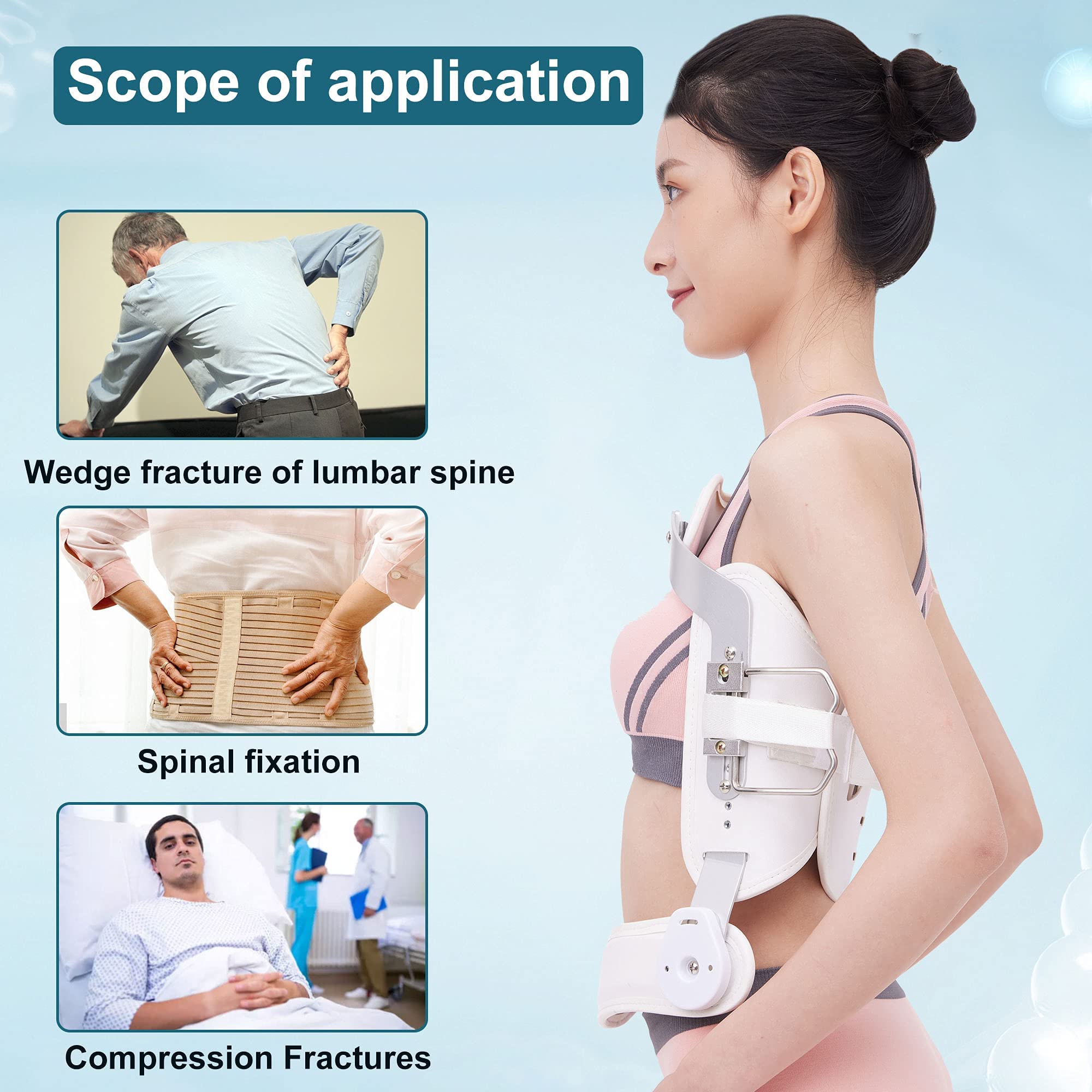
Bone Density Testing
In addition to diagnosing the fracture itself, healthcare providers often recommend bone density testing to assess overall bone health and determine the presence and severity of osteoporosis. The most common test is dual-energy X-ray absorptiometry (DXA or DEXA scan).
Treatment Options for Spinal Compression Fractures
How are vertebral compression fractures treated? The approach depends on the severity of the fracture, the patient’s overall health, and the level of pain. Treatment options include:
Conservative Management
For stable fractures with minimal pain, conservative treatment may be sufficient:
- Pain management with over-the-counter or prescription medications
- Brief period of rest followed by gradual return to activity
- Bracing to support the spine and limit movement
- Physical therapy to improve strength and flexibility
- Lifestyle modifications to prevent future fractures
Minimally Invasive Procedures
For more severe fractures or those that don’t respond to conservative treatment, minimally invasive options include:
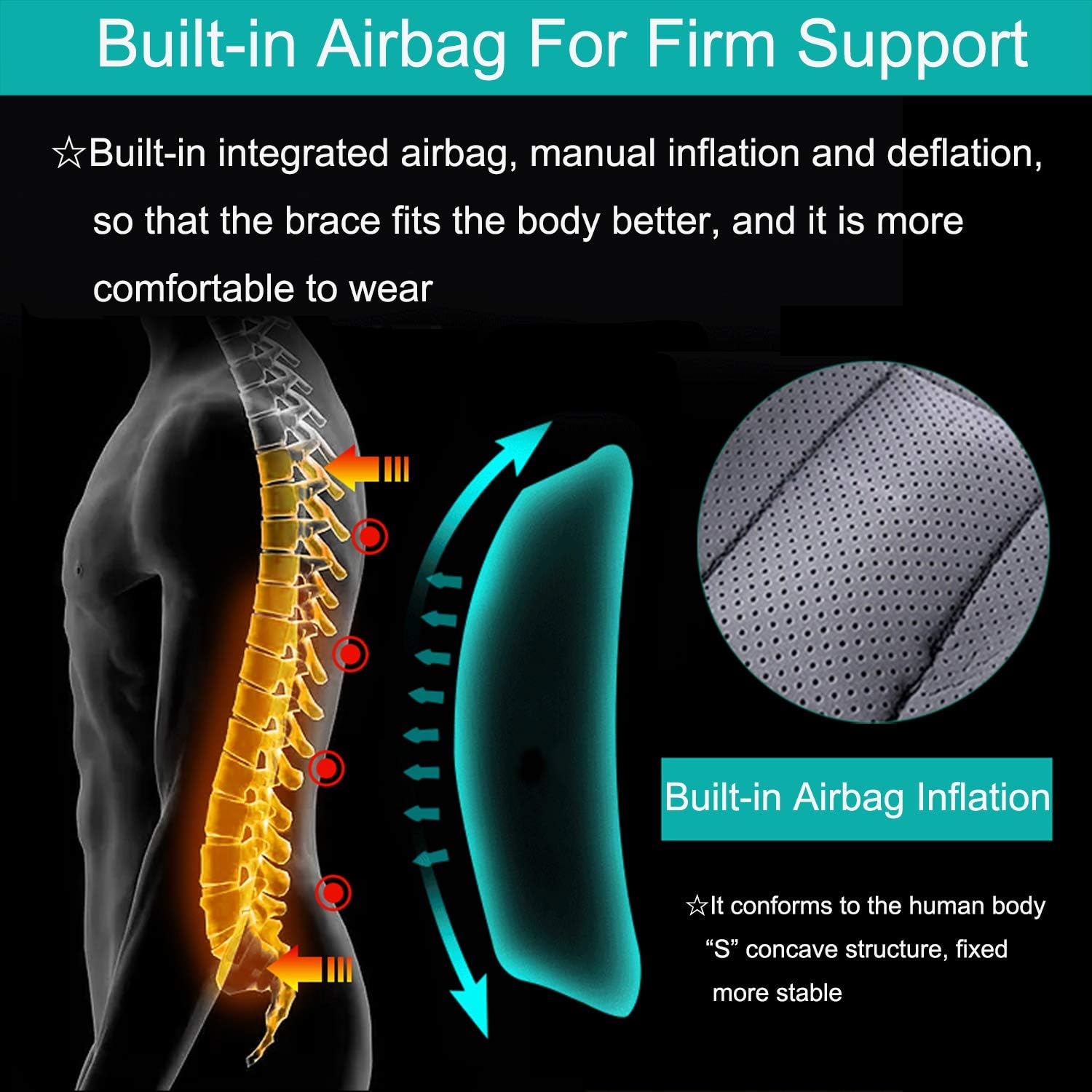
- Vertebroplasty: Injection of bone cement into the fractured vertebra to stabilize it and relieve pain.
- Kyphoplasty: Similar to vertebroplasty, but involves creating a space in the vertebra with a balloon before injecting cement, which can help restore vertebral height.
These procedures can provide rapid pain relief and improve mobility for many patients.
Surgical Intervention
In rare cases, such as severe instability or neurological complications, more extensive surgery may be necessary. This could involve spinal fusion or the placement of hardware to stabilize the spine.
Preventing Future Compression Fractures
Once you’ve experienced a vertebral compression fracture, preventing future fractures becomes crucial. How can you reduce your risk?
- Maintain a healthy diet rich in calcium and vitamin D
- Engage in weight-bearing and resistance exercises to strengthen bones
- Quit smoking and limit alcohol consumption
- Take osteoporosis medications as prescribed
- Use assistive devices if necessary to prevent falls
- Make home modifications to reduce fall risk
Your healthcare provider can help develop a personalized prevention plan based on your individual risk factors and overall health status.

Living with Spinal Compression Fractures
How can you maintain a good quality of life after experiencing a vertebral compression fracture? While recovery can be challenging, many people are able to return to their normal activities with proper management:
Pain Management Strategies
Effective pain control is essential for recovery and maintaining function. Options may include:
- Medications (both over-the-counter and prescription)
- Physical therapy and gentle exercises
- Heat or cold therapy
- Relaxation techniques and stress management
- Alternative therapies like acupuncture (with your doctor’s approval)
Adaptive Techniques and Devices
Learning new ways to perform daily activities can help reduce pain and prevent future injuries:
- Use proper body mechanics when lifting or bending
- Employ assistive devices like reachers or long-handled shoehorns
- Consider using a cane or walker if balance is an issue
- Adjust your home environment to make daily tasks easier and safer
Emotional and Psychological Support
The impact of spinal compression fractures isn’t just physical. Many people experience emotional challenges, including:

- Depression or anxiety
- Fear of future fractures
- Loss of independence
- Changes in self-image
Seeking support through counseling, support groups, or talking with friends and family can be beneficial in coping with these challenges.
Advances in Compression Fracture Treatment
What new developments are on the horizon for treating spinal compression fractures? Researchers are constantly working to improve diagnosis, treatment, and prevention strategies:
Improved Imaging Techniques
Advanced imaging technologies are helping to detect fractures earlier and with greater accuracy:
- High-resolution CT scans for detailed bone structure analysis
- Artificial intelligence-assisted image interpretation
- Functional MRI to assess pain pathways and treatment efficacy
Novel Treatment Approaches
Emerging treatments aim to provide better outcomes with fewer complications:
- Bioactive cements that promote bone healing in vertebroplasty and kyphoplasty
- Percutaneous implants for vertebral body reconstruction
- Gene therapies to enhance bone formation and strength
- Stem cell treatments to regenerate damaged bone tissue
Personalized Medicine
The future of compression fracture treatment lies in tailored approaches based on individual patient factors:

- Genetic testing to assess fracture risk and guide prevention strategies
- Customized 3D-printed braces for optimal support and comfort
- Personalized rehabilitation programs using virtual reality technology
These advancements hold promise for improving outcomes and quality of life for those affected by spinal compression fractures.
When Back Pain Is a Spine Compression Fracture
The type of fracture in the spine that is typically caused by osteoporosis is generally referred to as a compression fracture.
A compression fracture is usually defined as a vertebral bone in the spine that has decreased at least 15 to 20% in height due to fracture.
Watch: Spinal Compression Fracture Video
These compression fractures can occur in vertebrae anywhere in the spine, but they tend to occur most commonly in the upper back (thoracic spine), particularly in the lower vertebrae of that section of the spine (e.g. T10, T11, T12). They rarely occur above the T7 level of the spine. They often occur in the upper lumbar segments as well, such as L1.
This article provides in-depth information on vertebral compression fractures, including symptoms, diagnosis, and treatments.
Types of Fracture
A spinal fracture due to osteoporosis (weak bones) is commonly referred to as a compression fracture, but can also be called a vertebral fracture, osteoporotic fracture, or wedge fracture.
The term “wedge fracture” is used because the fracture usually occurs in the front of the vertebra, collapsing the bone in the front of the spine and leaving the back of the same bone unchanged. This process results in a wedge-shaped vertebra. A wedge compression fracture is generally a mechanically stable fracture pattern.
advertisement
While wedge fractures are the most common type of compression fracture, there are other types as well, such as:
- Crush fracture. If the entire bone breaks, rather than just the front of the vertebra, it may be called a crush fracture.
- Burst fracture. This type of fracture involves some loss of the height in both the front and back walls of the vertebral body (rather than just the front of the vertebra). Making this distinction is important because burst fractures can be unstable and result in progressive deformity or neurologic compromise.
In This Article:
When Back Pain Is a Spine Compression Fracture
Vertebral Fracture Symptoms
Osteoporosis: The Primary Cause of Collapsed Vertebrae
Diagnosing Vertebral Compression Fractures
Compression Fracture Treatment
Spinal Compression Fracture Video
Compression Fracture Symptoms
Vertebral fractures are usually followed by acute back pain, and may lead to chronic pain, deformity (thoracic kyphosis, commonly referred to as a dowager’s hump), loss of height, crowding of internal organs, and loss of muscle and aerobic conditioning due to lack of activity and exercise.
A combination of the above problems from vertebral fractures can also lead to changes in the individual’s self-image, which in turn can adversely affect self-esteem and ability to carry on the activities of daily living.
Because the majority of damage is limited to the front of the vertebral column, the fracture is usually stable and rarely associated with any nerve or spinal cord damage.
advertisement
Spinal Fractures are Common
View this
7 Causes of Pain in the Upper Left Back Infographic
in our Infographic Center.
View this
7 Causes of Pain in the Upper Left Back Infographic
in our Infographic Center.
Spinal compression fractures that occur as a result of osteoporosis are actually quite common, occurring in approximately 700,000 people in the U.S. each year.
1
"Advances in Osteoporosis Prevention, Diagnosis and Treatment Presented at 7th," National Osteoporosis Foundation, Accessed April 10, 2013.
,
2
Riggs, B.L., Melton L.J. 3rd, "The worldwide problem of osteoporosis: insights afforded by epidemiology," Bone, 1995, 17(5 Suppl): p. 505S-511S.
See What You Need to Know About Osteoporosis
Osteoporosis is especially common in postmenopausal women. In fact, it is estimated that approximately 25% of all postmenopausal women in the United States have had a vertebral compression fracture.
3
Melton L.J. 3rd., "Epidemiology of spinal osteoporosis," Spine, 1997;22:2S-11S.
See Signs and Complications of Osteoporosis
While osteoporosis is far more prevalent in women – approximately four times as many women have low bone mass or osteoporosis as men – it still occurs in men. As many as 25% of men over age 50 will suffer a bone fracture (e.g. hip or spine) due to osteoporosis.
4
"Just for Men," National Osteoporosis Foundation, Accessed April 10, 2013.
The problem is that the fracture is not always recognized or accurately diagnosed – instead, the patient’s pain is often just thought of as general back pain, such as from a muscle strain or other soft tissue injury, or as a common part of aging. As a result, approximately two thirds of the vertebral fractures that occur each year are not diagnosed and therefore not treated.
Dr. Scott Boden is an orthopedic surgeon with more than 25 years of experience specializing in spine surgery. He is Director of the Emory Orthopaedics & Spine Center and Chairman of the Department of Orthopaedics at Emory University School of Medicine.
- Share on Facebook
- Share on Pinterest
- Share on Twitter
- Subscribe to our newsletter
Email this article
advertisement
Editor’s Top Picks
What You Need to Know About Osteoporosis
Vertebroplasty vs.
 Kyphoplasty
KyphoplastySpinal Compression Fracture Video
Kyphoplasty (Osteoporosis Fracture Treatment) Video
Vertebroplasty Procedure Video
Surgery for Spinal Compression Fractures
Sometimes surgery is required for spinal compression fractures, no matter the cause. The goal of the surgery is to fuse and repair the fracture, eliminate back pain, and restore posture and ease of movement. The most common surgical procedures for spinal compression fractures are lumbar fusion and vertebroplasty/kyphoplasty.
In a lumbar fusion, the vertebrae are connected with rods.
Minimally invasive lumbar fusion joins the bones of the spine in the lower back together so that there is no longer any motion between them.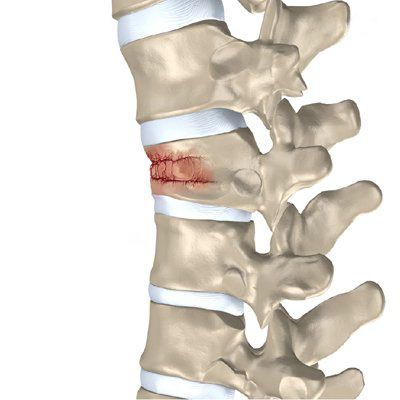 This procedure can repair a fracture; correct deformity; and reduce spinal pressure, pain, and nerve damage. Minimally invasive lumbar fusions do not require the large incision or the muscle retraction typically used in conventional fusions. Patients undergoing this procedure have a fast recovery time. A recent advance is the use of a computerized image guidance system for many patients undergoing lumbar fusion. This has the advantage of aiding the surgeon in optimal placement of screws and avoiding injury to delicate nerve tissue.
This procedure can repair a fracture; correct deformity; and reduce spinal pressure, pain, and nerve damage. Minimally invasive lumbar fusions do not require the large incision or the muscle retraction typically used in conventional fusions. Patients undergoing this procedure have a fast recovery time. A recent advance is the use of a computerized image guidance system for many patients undergoing lumbar fusion. This has the advantage of aiding the surgeon in optimal placement of screws and avoiding injury to delicate nerve tissue.
Until recently, all patients undergoing lumbar fusion required a bone or synthetic graft either from the hip region or from a bone bank. In most patients undergoing lumbar spinal fusion, metal titanium instrumentation is also used. This will typically involve placing pedicle screws into the bone and connecting these with a rod.
Vertebroplasty and Kyphoplasty: Advanced procedures such as kyphoplasty and vertebroplasty allow neurosurgeons to reconstruct compressed vertebral bone, restore alignment, or remove pressure on a nerve. Vertebroplasty and kyphoplasty are image-guided procedures performed in an X-ray suite or in an operating room with X-ray equipment. (Download our brochure about vertebroplasty and kyphoplasty.)
Vertebroplasty and kyphoplasty are image-guided procedures performed in an X-ray suite or in an operating room with X-ray equipment. (Download our brochure about vertebroplasty and kyphoplasty.)
In a vertebroplasty, the surgeon advances a needle through the skin on a patient’s back under x-ray guidance to confirm that it has entered the fractured vertebra (left). The surgeon then injects bone cement into the fractured vertebra (right), where it quickly hardens to provide stability to the bone and relief of pain.
For a vertebroplasty, the patient is prone (face down) and the procedure is done either under general anesthesia or under sedation (in which the patient is awake). One or two needles are advanced under x-ray guidance into the fractured vertebra through the skin in the back. After the x-ray confirms good needle placement, the surgeon injects bone cement into the fractured vertebra. The cement hardens in a few minutes, providing immediate stability to the bone and relief of pain.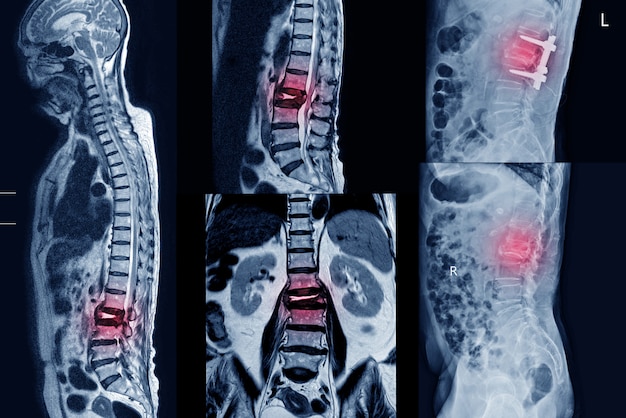
To perform a kyphoplasty, a surgeon first guides a catheter into the vertebra, then inserts and inflates a small balloon. The balloon creates a cavity as it inflates; the balloon is then deflated and withdrawn from the vertebra. In the next step, the surgeon inserts a needle into the catheter to deliver bone cement into the cavity. The cement hardens in place, providing immediate stability to the bone.
Kyphoplasty, also referred to as “balloon vertebroplasty,” is similar to vertebroplasty, but (as its name suggests) uses a balloon. The balloon is guided through the needle into the vertebra and inflated in order to correct the abnormal wedging of the broken vertebra. Once the bones are in the correct position, the balloon is deflated and removed, and the large cavity created is filled with bone cement. The cement hardens in place, providing immediate stability to the bone.
The spine surgeons at the Weill Cornell Medicine Brain and Spine Center are fortunate to be part of the NewYork-Presbyterian Hospital team (see Doctors Who Treat Spinal Compression Fractures). We have been ranked as one of the top hospitals in the United States by US News and World Report for more than two decades, and our Neurology and Neurosurgery program routinely ranks as one of the top programs nationwide). Together, the NewYork-Presbyterian/Weill Cornell Medical Center team is the best choice for your back.
We have been ranked as one of the top hospitals in the United States by US News and World Report for more than two decades, and our Neurology and Neurosurgery program routinely ranks as one of the top programs nationwide). Together, the NewYork-Presbyterian/Weill Cornell Medical Center team is the best choice for your back.
Request an Appointment | Refer a Patient
Causes, symptoms, diagnosis and treatment at the NCC of Russian Railways, with a branch of the Central Clinical Hospital No. 1.
In case of a spinal injury, both bone structures (vertebrae) and soft tissues (intervertebral discs, ligaments, muscles, nerve roots) can be damaged , spinal cord). Very serious consequences of a spinal injury are damage to the nervous structures, instability of the spine.
Instability of the spinal segment can lead to mechanical pain and spinal deformity. In some cases, spinal instability can cause dysfunction of the spinal cord or nerve roots as a result of their dynamic compression. Spinal instability can develop as a result of some types of vertebral fractures, as well as torn discs and ligaments that connect the vertebrae to each other. In many cases, surgery is required to treat a serious spinal injury. In this case, the main tasks of the operation are to eliminate compression of the nerve structures and stabilize the spine to prevent subsequent damage to the spinal cord and deformation of the spinal column.
Spinal instability can develop as a result of some types of vertebral fractures, as well as torn discs and ligaments that connect the vertebrae to each other. In many cases, surgery is required to treat a serious spinal injury. In this case, the main tasks of the operation are to eliminate compression of the nerve structures and stabilize the spine to prevent subsequent damage to the spinal cord and deformation of the spinal column.
Vertebrae, like other bones of our body, normally have a significant margin of safety and can withstand significant loads. However, when an external force exceeding the strength of the vertebra is applied, the integrity of its bone structure is violated, that is, a fracture occurs. Vertebral fractures in young and middle-aged people often occur when exposed to a very significant external force. The most common causes of vertebral fractures in this category of individuals are car accidents, diving injuries, and falls from great heights.
If a fracture causes a decrease in the height of the vertebral body, then such a fracture is called a compression fracture. This type of vertebral fracture is the most common. Quite often, fractures of bones, including vertebrae, occur with a decrease in bone density. This disease is called osteoporosis and is most common in older women. For example, 40% of women over 80 have a compression fracture of the spine at least once in their lives. Most often, these fractures remain unrecognized, but they can cause progressive spinal deformity (“senile hump”), as well as persistent back pain. In osteoporosis, a very small force (such as falling from a chair) is enough to cause a vertebral fracture.
Another fairly common cause of compression fractures is a metastatic lesion of the spine in malignant tumors. Metastases are called screenings of a cancerous tumor in other organs and tissues of the body. When the vertebral body is affected by a tumor metastasis, progressive destruction of the vertebral body occurs, and a fracture can occur with minimal external load.
Fractures of the spine may be accompanied by the occurrence of specific complications, including very serious ones, leading to the patient’s disability.
The most common complications are spinal instability, development of kyphotic deformity and neurological disorders.
Segmental instability
If a compression fracture results in a decrease in the height of the vertebral body by more than 50%, the risk of developing segmental instability is significantly increased. The vertebral motor segment is the functional motor unit of the spinal column and consists of two adjacent vertebrae and their connecting disc, facet joints, ligaments and muscles. In this case, we can draw an analogy with a bicycle chain, which consists of links connected to each other. Accordingly, the spinal column consists of spinal motion segments connected to each other. The spinal motion segment functions normally only with the normal function of the structures forming the segment.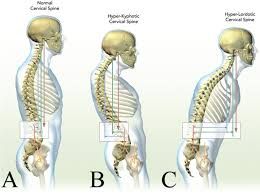 If the structures that form the motor segment are damaged, the segment may become “loose” with the formation of hypermobility. This condition is called instability and is the cause of chronic pain, rapid degenerative changes in the damaged segment, and damage to nerve structures.
If the structures that form the motor segment are damaged, the segment may become “loose” with the formation of hypermobility. This condition is called instability and is the cause of chronic pain, rapid degenerative changes in the damaged segment, and damage to nerve structures.
Kyphotic deformity of the spine
Normally, there is a kyphotic bend in the thoracic spine. However, if the kyphotic bend exceeds 40-45 degrees, then such a deformation of the spine is considered pathological. A patient with a kyphotic deformity of the spine develops a hump. Most often, spinal kyphosis occurs in older women with osteoporosis, who often develop vertebral compression fractures. The anterior part of the vertebral body collapses, resulting in a wedge-shaped deformity of the vertebral body. A change in the configuration of the spinal column can lead to an overload of certain spinal motion segments and the development of muscle spasm, which contributes to the formation of a chronic pain syndrome.
Neurological complications
If fragments of the destroyed vertebral body lead to compression of the spinal cord or nerve roots, then neurological complications may develop. Normally, there is a small space between the spinal cord and the walls of the spinal canal. However, with a fracture of the vertebrae, the spinal canal can narrow due to the introduction of fragments of the broken vertebral body into it. Some individuals have a congenital narrowness of the spinal canal, and in these cases, even a slight protrusion of bone fragments into the canal can lead to significant compression of the spinal cord. With a fracture of the spine, in some cases, damage to the nervous structures occurs immediately at the time of injury, while in others it develops gradually, sometimes several weeks or even months after the injury. In these “delayed” cases, damage to nerve structures is usually caused not by trauma itself, but by a violation of the blood supply to the spinal cord due to compression of the blood vessels that feed the nerve structures. Violation of the blood supply is due to the narrowing of the spinal canal due to the depression of bone fragments. This condition is called spinal stenosis. In this case, symptoms such as pain, numbness of a part of the body, decreased muscle strength in the limbs, urination and defecation disorders increase gradually and are symptoms of a severe spinal cord injury called myelopathy. In these cases, only surgery can stop the process of irreversible damage to spinal cord neurons.
Violation of the blood supply is due to the narrowing of the spinal canal due to the depression of bone fragments. This condition is called spinal stenosis. In this case, symptoms such as pain, numbness of a part of the body, decreased muscle strength in the limbs, urination and defecation disorders increase gradually and are symptoms of a severe spinal cord injury called myelopathy. In these cases, only surgery can stop the process of irreversible damage to spinal cord neurons.
Treatment
Conservative therapy
Treatment of compression fractures of the spine in most cases includes taking analgesics, observing a protective regimen and using special reclinators and corset belts. In some cases, surgical treatment is also necessary.
Taking analgesics can reduce the severity of pain. However, it must be remembered that painkillers do not contribute to the healing of the fracture. A significant improvement in well-being, the cessation of pain after the start of pain therapy does not mean that the disease has been cured. In order for the fracture to grow together in the optimal time, it is necessary to observe a protective regimen. During the period of fracture consolidation (12-14 weeks), it is necessary to avoid any physical activity that can lead to an increase in the degree of deformation in the fractured vertebral body. It is strictly forbidden to lift weights, significant tilts and turns of the torso. In many cases, a doctor may recommend bed rest for several weeks. This is especially important for elderly patients with osteoporosis, in whom fracture consolidation does not occur as easily and quickly as in younger people.
In order for the fracture to grow together in the optimal time, it is necessary to observe a protective regimen. During the period of fracture consolidation (12-14 weeks), it is necessary to avoid any physical activity that can lead to an increase in the degree of deformation in the fractured vertebral body. It is strictly forbidden to lift weights, significant tilts and turns of the torso. In many cases, a doctor may recommend bed rest for several weeks. This is especially important for elderly patients with osteoporosis, in whom fracture consolidation does not occur as easily and quickly as in younger people.
Most patients need to wear special corset belts. This external fixator minimizes movement in the injured spinal segment, which promotes fracture consolidation. Corset belts used for fractures fix the spine in the position of hyperextension (overextension). This reduces pressure on the anterior part of the damaged vertebral body and reduces its collapse.
Compression fractures of the vertebrae heal in most cases within three months.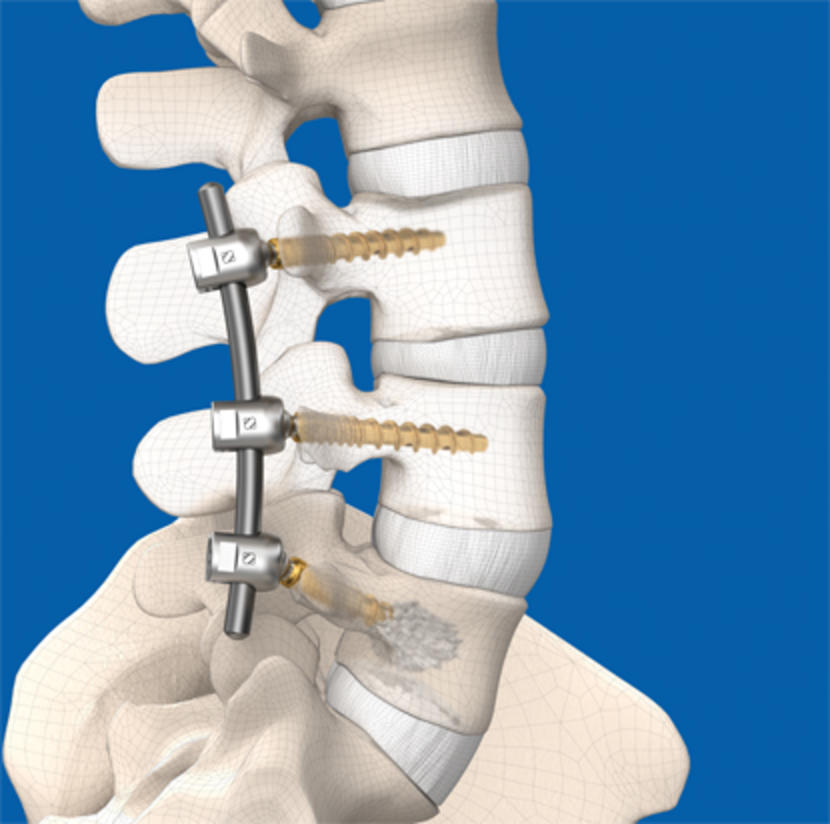 As a rule, a spinal radiograph is taken every month to monitor the process of consolidation of a broken vertebra.
As a rule, a spinal radiograph is taken every month to monitor the process of consolidation of a broken vertebra.
Surgical treatment
Surgical treatment of compression fractures of the spine is indicated for compression of the nerve structures (spinal cord, nerve roots), spinal instability, and severe pain syndrome. For example, with a decrease in the height of the vertebral body on radiographs by more than 50%, spinal instability occurs, which can lead to dynamic (movement-related) compression of the nerve structures. In this case, surgery is necessary to prevent damage to the spinal cord and nerve roots.
There are several types of operations that are performed for compression fractures of the spine. Depending on the type of fracture, the severity of compression of the nerve structures, the doctor may choose one or another type of operation. The main principles of surgical intervention for spinal fractures are decompression of the nerve structures (if there are signs of compression of the spinal cord or nerve roots by the bone structures), as well as stabilization (fixation in a physiologically advantageous position) of the damaged spinal segment.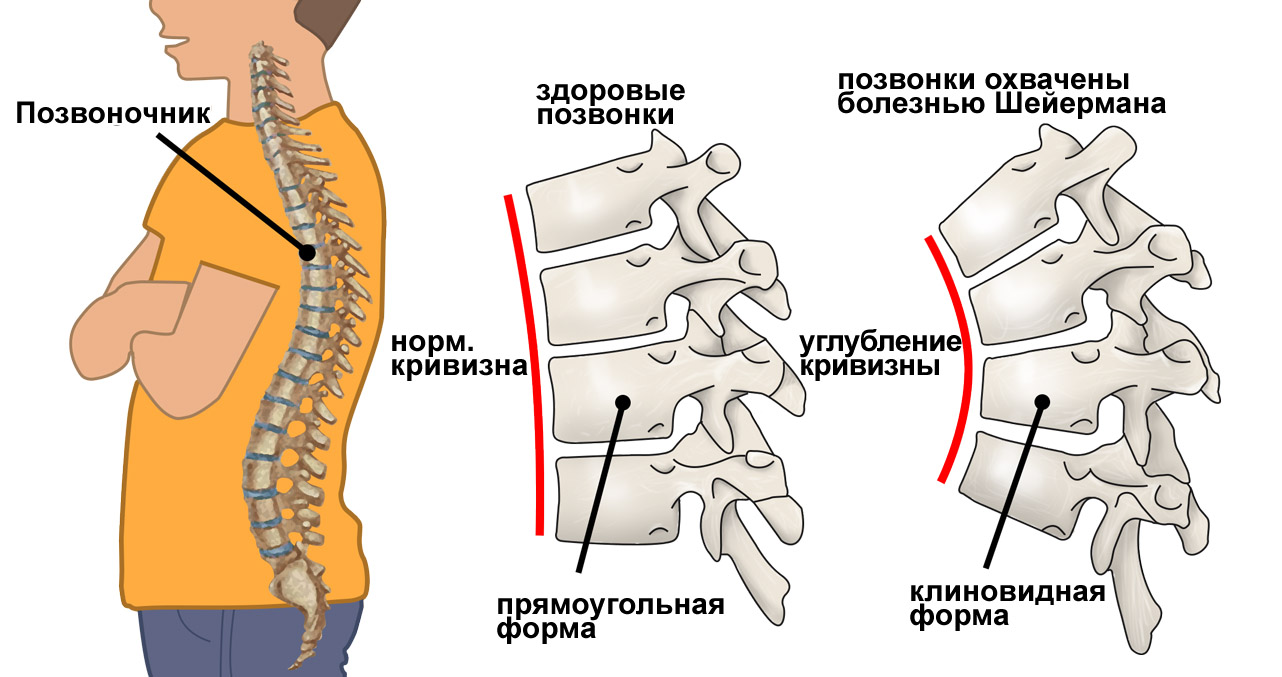
You can undergo diagnostics and treatment of diseases of the spine and spinal cord by contacting the specialists of the Center for Spinal Cord Pathology of our clinic or by making an appointment with a specialist – a neurosurgeon at any time convenient for you.
For more information and to make an appointment, please call our contact center: (495) 925-02-02 (24/7).
Recovery after a spinal fracture company blog
Description of rehabilitation. rehabilitation plan. Recovery times.
Fracture of the spine is a dangerous pathological condition, which consists in a violation of the integrity of the vertebra, possible injury to neighboring anatomical structures, especially the spinal cord. Often, especially in road accidents, fractures of several vertebral bodies and their processes are observed at once, which makes the injury according to the classification severe, often leading to severe consequences.
Injuries to the spinal cord during a fracture are fraught with a violation of nerve conduction, which leads to dysfunction of organs and systems, as well as movements in the upper and lower extremities. It should be noted that when rehabilitation of a spinal fracture is carried out, it is not only about the return of lost movements, but also about an integrated approach, activating the functions of the lost nerve centers. Often patients ask the question, what does the patient feel after the injury? How to determine the possible mechanism of injury at the scene of an accident. According to statistics, more than half of the cases can proceed without any symptoms at all in the first minutes, the patient is in a state of excitement, euphoria, and often not only denies the very fact of having pain in the spine, but also completely refuses hospitalization due to imaginary well-being. If the victim points to the area of the back, to the presence of pain and other discomfort, urgent hospitalization is indicated for the purpose of conducting a diagnostic search.
It should be noted that when rehabilitation of a spinal fracture is carried out, it is not only about the return of lost movements, but also about an integrated approach, activating the functions of the lost nerve centers. Often patients ask the question, what does the patient feel after the injury? How to determine the possible mechanism of injury at the scene of an accident. According to statistics, more than half of the cases can proceed without any symptoms at all in the first minutes, the patient is in a state of excitement, euphoria, and often not only denies the very fact of having pain in the spine, but also completely refuses hospitalization due to imaginary well-being. If the victim points to the area of the back, to the presence of pain and other discomfort, urgent hospitalization is indicated for the purpose of conducting a diagnostic search.
Unfortunately, recovery after a spinal fracture takes quite a long time and requires a lot of effort on the part of the patient.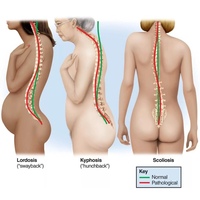 To achieve lasting results, the return of the previous range of motion, the patient undergoes one-year courses of rehabilitation and recovery.
To achieve lasting results, the return of the previous range of motion, the patient undergoes one-year courses of rehabilitation and recovery.
Make an appointment with a traumatologist-orthopedist Ondar Temir Evgenievich and get an effective treatment program :
Rehabilitation plan
Terms of rehabilitation
Recovery depends on the type of fracture (you can read more about fractures in our Injuries section). In case of destruction of the anterior part of the vertebra, whose soft tissues connecting the vertebrae are not damaged, it is possible to treat without surgical intervention by wearing a corset, medication and physiotherapy. In this case, the rehabilitation period will be 3-6 months. When we see an unstable fracture or displacement with a fracture, or has resulted in spinal cord injury, surgical methods will be used to treat it. And the recovery time is about 1 year. Of these, the active phase of rehabilitation (exercise therapy, massages) is approximately 6 months.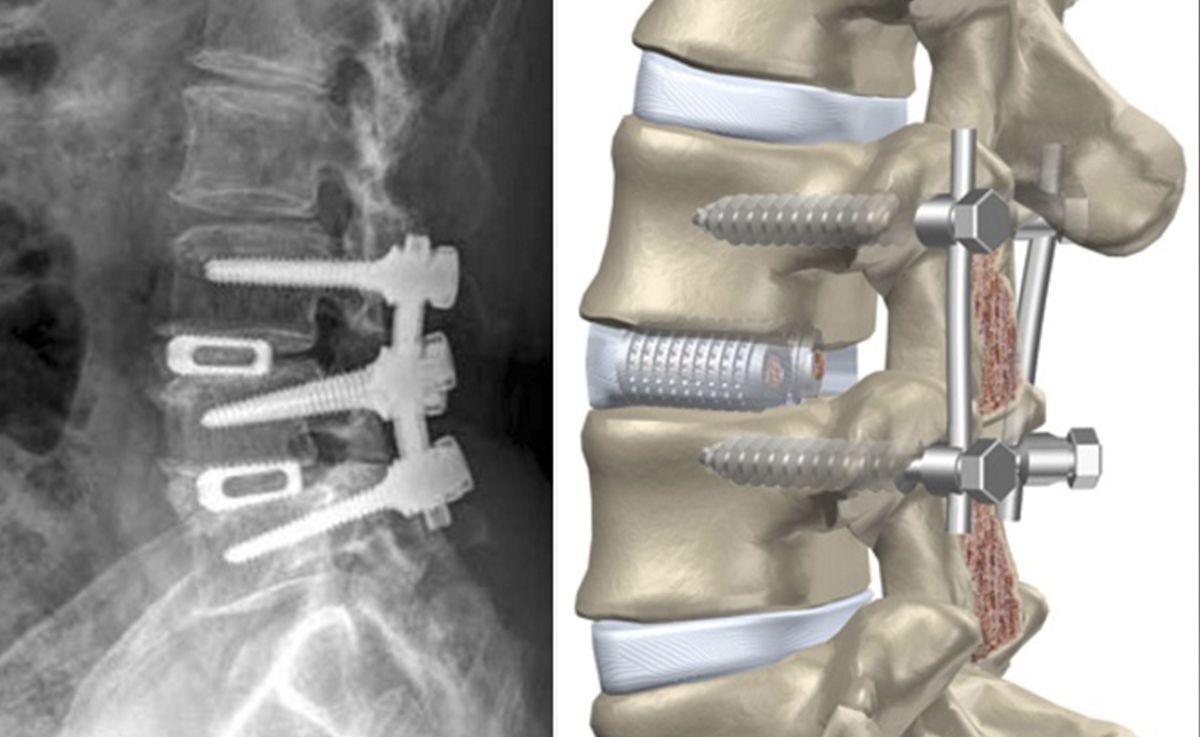

 Kyphoplasty
Kyphoplasty